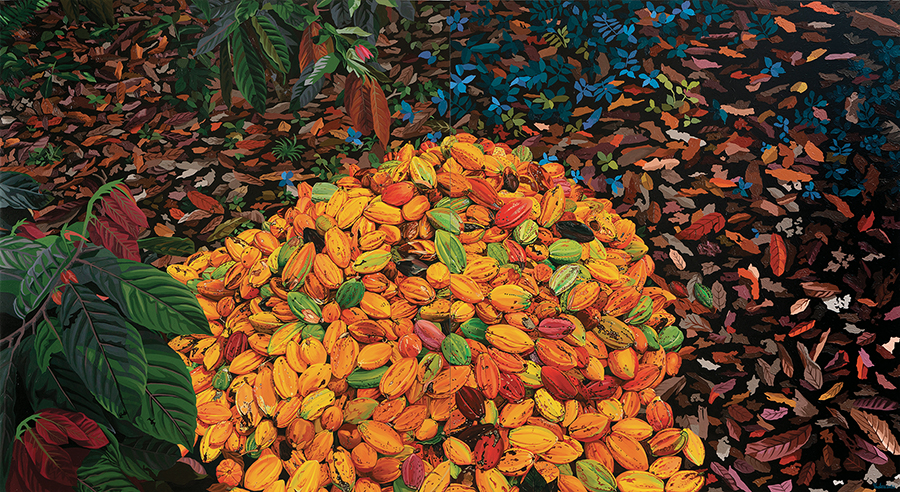
To be titled, a painting by Marc Padeu, whose work was on view in April at Peres Projects, in Milan, Italy. Courtesy the artist and Peres Projects
Five-year-olds will believe a trustworthy robot over an unreliable human, even if the robot is shaped like a truck. White-tufted marmosets, like corvids, are not fooled when a magician performs the French drop illusion, since, unlike yellow-breasted capuchins, they lack opposable thumbs, which precipitate thumb-related assumptions. Bumblebees learn from one another how to solve puzzle boxes. Researchers recommended further study of the reproductive plasticity of female Gambian pouched rats, among whom dominant individuals may pheromonally signal to submissive ones that they should close up their genitals. Stoats remain interested in the bedding of estrous females whether or not it is mating season. Dutch trains are being disrupted by tunneling badgers, and windy outdoor conditions were worsening bacterial contamination on chicken farms in the American West. An autopsy of a house cat revealed amphetamine, methamphetamine, and three types of benzodiazepine. A serval found in a tree in Cincinnati tested positive for cocaine. Colombia planned to send India sixty and Mexico ten of the descendants of Pablo Escobar’s hippos. Skeleton G, who went down in 1628 with the Vasa, was found to have been a woman. An elite Mongol woman buried with a birch-bark hat and silk robes depicting a golden dragon was found to have drunk yak milk. Archaeologists proposed that syncretized Ishtar–Aphrodite figurines carved from alabaster and wearing crescent crowns helped women both to understand their sexuality and to prefigure their journeys into the afterlife. Whipworms are present in 83.3 percent of Joseon-era mummy feces.
Scientists calculated that earth was likely cooling between 6500 bc and 1800 ad; that one third of the estimated 2,400 to 3,200 cubic kilometers of displaced seafloor sediment previously blamed on the Storegga Event was caused by the Nyegga Landslide; that the majority of CO2 emissions from the Solfatara crater, which vary between 4,000 and 5,000 tons daily, are due to magma; and that Pakistan’s Chenab, Jhelum, Kabul, and upper Indus River basins will reach 25 percent of their annual streamflow between eleven and thirty-seven days earlier in the year by 2099. Leaves are staying on the trees of northwestern Ohio a month longer than they did a century ago. The destabilization of forests is reducing their usefulness as a carbon sink. Removed atmospheric CO2 can be stored as bicarbonate of soda. Compulsory carbon rationing on the model of British wartime rations may be fairer than individual cap-and-trade schemes. Smoke from the 2020 Australian wildfires widened the hole in the ozone layer by 10 percent. The number of stars visible in the sky will fall by 60 percent in the next eighteen years. Pine ghost canker has spread to southern California. UC Davis students who experience lawn-mowing sheep report less stress. Researchers developed a blood test for anxiety, which was found to underlie the joy of missing out.






















































































